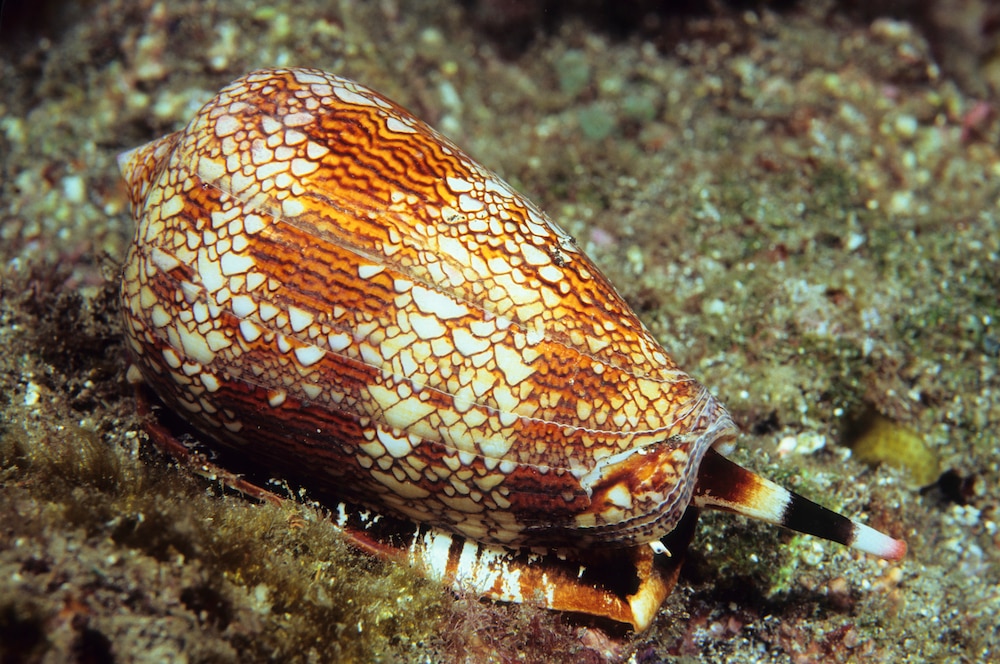Create a free profile to get unlimited access to exclusive videos, sweepstakes, and more!
Sea snail venom is just as effective as morphine for pain relief and lasts longer
At least fish don't feel themselves being swallowed whole.

When you imagine a superpowered predator, you might conjure images of lions or bears, or maybe anthropomorphic aliens who hunt humans for sport. You’re probably not picturing snails, but you should be. Deepwater cone snails pack an array of venoms which vary from species to species and help them to consume prey which is much larger and faster than you might expect. The internet’s immortal assassin snail meme might seem silly, but if it’s a cone snail we’re talking about, then we should take it seriously.
Scientists are interested in cone snail venom for the hundreds of compounds they contain. In nature, those compounds paralyze or otherwise disable prey long enough for the snails to swallow them whole. But taken into the laboratory, they could be the basis for a new class of pain medications.
Helena Safavi from the Department of Biomedical Sciences at the University of Copenhagen, and colleagues, studied the venom of the species Conus rolani in search of new pain medications which could be better than opioids like morphine. Their findings were published in the journal Science Advances.
“These particular snails are very unusual in the way they inject their venom into the prey and retract into their shells. They wait up to three hours until the fish no longer moves and then come in and swallow it up. They use a very slow predation strategy,” Safavi told SYFY WIRE.
It’s that slow reaction time that got researchers interested in this particular species. Most cone snails stay attached to their prey and consume them almost immediately after the strike, but something in the rolani venom allowed them the benefit of patience.
Venom was harvested from the snails and analyzed using mass spectrometry. The team found roughly 200 separate compounds which all come together during their killer strike. Scientists were interested in one compound in particular, the one which they believe allows for this slow hunting strategy.
“The cocktail given together leads to a very slow death. There are some paralytics, but the compound we looked at, we think it inhibits the prey from feeling pain and thereby trying to escape,” Safavi said.
The compound works by activating a specific subtype of somatostatin receptor, resulting in pain reduction. Prior studies have shown that activation of these receptors does reduce pain, but there are currently no drugs on the market which work through that mechanism.
Once the compound was identified, researchers synthesized it in the laboratory, which means if this drug ever goes to market, we won’t have to harvest it directly from cone snails. Once the compound was identified and synthesized, they tested it by injecting it into laboratory mice and observing them. They found that it was successful in blocking pain in mice and that pain dulling effect lasted longer than morphine.
That’s great news for people suffering from severe pain, and it’s even better that the venom compound works in the precise way that it does, potentially alleviating some or all of the negative side effects of opioid use.
“The hope is because this toxin works through a non-opioid pathway that it would not have the detrimental effects of opioids including tendencies to become addicted as well as respiratory distress. Also, it’s likely that a medication which targets the somatostatin receptor will be good for chronic pain,” Safavi said.
This study is part of the preliminary discovery work and didn’t look specifically at how it might impact the body for longer periods. That said, similar compounds which activate different somatostatin receptors have been used to treat neuroendocrine tumors with little or no side effects even after long-term use.
There are times when you need a pain medication to hit hard and hit fast, but when it comes to managing chronic pain, slow and steady pain relief really does win the race.



























